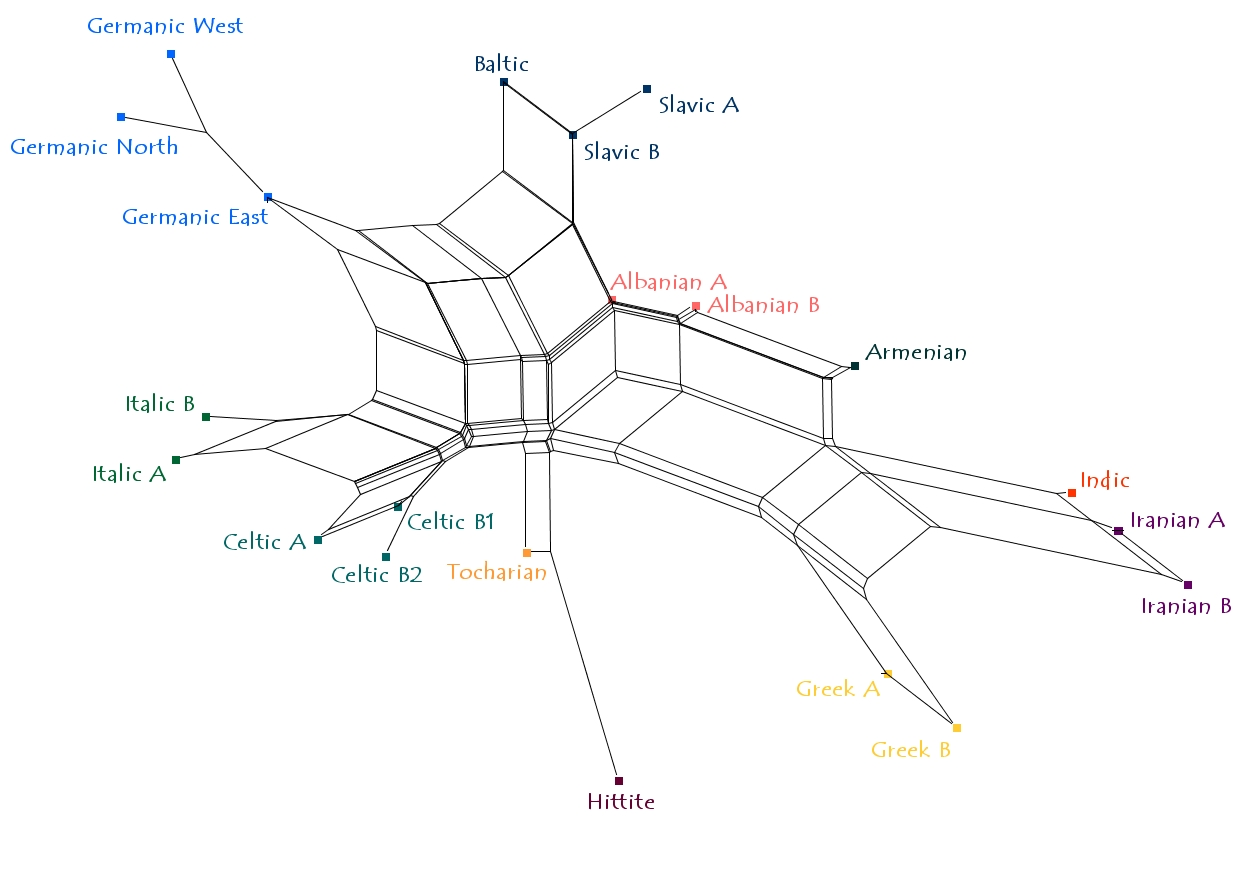Dates and dialects in the divergence of Indo-European
Hvem, hvad, hvor and hvornår
Gæsteforelæsning ved Dr. Paul Heggarty, McDonald Institute for Archaeological Research, University of Cambridge.
Forelæsningen, som er på engelsk, finder sted den 14. juli 2009 kl. 13:15 på KUA i lokale 27.0.09.
Arrangør: Roots of Europe.
Alle er velkomne.
Kort beskrivelse af emnet
 As the title suggests, this is a talk of two halves: first, on when Proto-Indo-European first began to diverge; second, on how, as either a branching tree or a dialect continuum. The two come together, however, as aspects of a wider question: what in the real world was the driving-force behind the first geographical expansion, and thus divergence, of Indo-European?
As the title suggests, this is a talk of two halves: first, on when Proto-Indo-European first began to diverge; second, on how, as either a branching tree or a dialect continuum. The two come together, however, as aspects of a wider question: what in the real world was the driving-force behind the first geographical expansion, and thus divergence, of Indo-European?
On dates, I argue not in favour of Gray & Atkinson's (2003) controversial approach, but certainly against any objection that their result must be wrong because we "already know" the right answer. For the methods claimed to have given us that answer hang (le mot juste) on assumptions that are demonstrably invalid. This is already widely appreciated for glottochronology; so I focus here on calling the bluff on linguistic palaeontology, with its Indo-European horse myth, its wheel, plough and much more inconvenient king.
On dialects, both Gray & Atkinson (2003) and Ringe et al. (2002) have turned to phylogenetic analysis algorithms to offer us respectively an Indo-European "consensus tree", and a "perfect phylogeny", no less. Yet from other comparative Indo-European data (in this case, from Anttila 1989: 305) one can just as well obtain a radically different picture in which early Indo-European divergence looks nothing like a tree at all, and everything like a dialect continuum instead. Indeed, a closer look at both Gray & Atkinson's and Ringe et al.'s own data reveals that they too in fact support a continuum vision of the higher-order classification of Indo-European. This is by no means just a matter of modelling, for branches and continua correspond to quite different population history scenarios.
I close by bringing these two strands together. What do these revisions to when and how Indo-European diverged entail for our understanding of why it did? I return to first principles of what in the real world actually accounts for great language expansions, with consequences that bode ill for the Kurgan scenario still closest to the hearts of Indo-Europeanist scholars. Entrenched though it may seem to them, they would do well to realise how far its outdated vision now lies from archaeologists' consensus. Perhaps it is only linguists' traditionalism that keeps the Kurgan hypothesis alive. It may be time that they too switch off its life-support, to see if it really survives on its own merits.
